Osteochondrosis is the most common cause of back pain.Damage to intervertebral discs underlying the development of the disease are found in all second people who have reached 40 years and, at age 50, 70% of the population is already amazing.At the same time, today osteochondrosis is increasingly found in young people and even teenagers.Intervertebral hernia, radicoito, brain supply disorders - all of these are complications of osteochondrosity that threaten deficiency and often leading to disability.
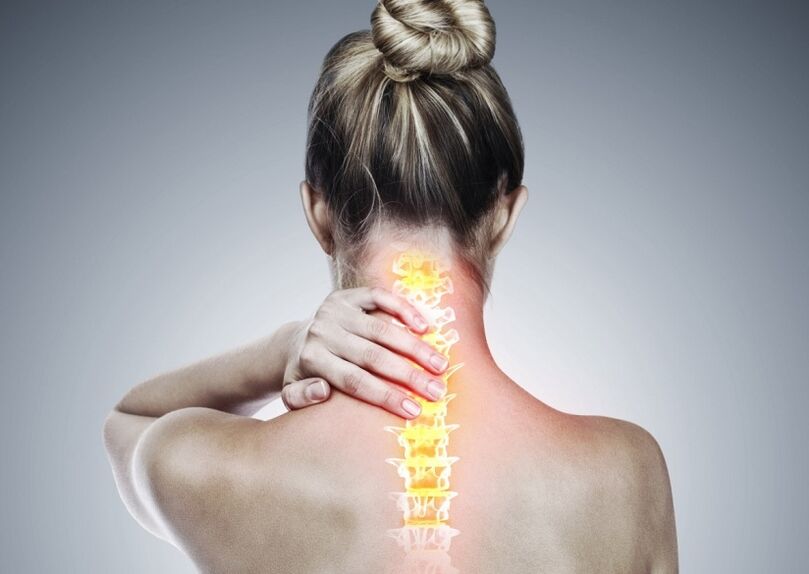
Effective treatment methods that allow not only to remove symptoms, but also helping to restore destroyed areas of vertebrae in traditional medicine, there is almost no.Therefore, it is so important to understand which factors lead to the destruction of the discs, which needs to be changed in their lifestyle to prevent the development of osteochondrosis.And what measures should be taken to deal with existing changes and start recovery processes in the spine.
What is osteochondrosis?How is the disease progressing?
Osteochondrosis is a disease in which the processes of destruction in the spinal segment -motorcycles begin to prevail over recovery processes, which manifest themselves by back pain, a limitation of mobility, etc.In the course of the disease, intervertebral complications, radiculitis (radiculopathy), Ishias and other complications.
The intervertebral disc (then referred to as "disk") is an elastic tissue ring, whose fibers are woven into an underlying and underlying vertebra.Due to its special structure, the intervertebral disc protects each vertebra from destruction and also ensures the mobility of the entire spine (slope, torsion).
In the center of the intervertebral disc, there is a pulp nucleus in which it resembles a rubber pillow full of liquid.In an adult, it consists of 70% of water, as well as carbohydrates that can turn on and give water.At the time of load in the corresponding segment of the spine, the core provides water and flattery and, after the end of the effect, assumes the previous form.A shock absorption pillow allows the spine and extinguished up to 80% of the shock load that reaches the spine.
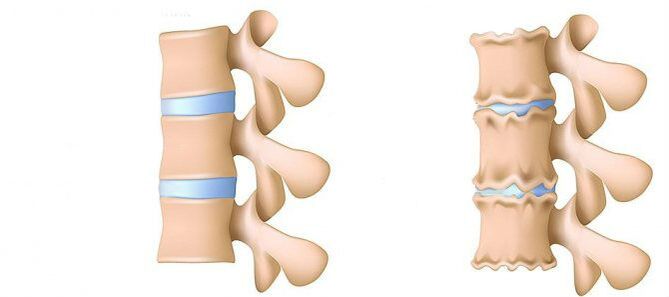
Degenerative-distribution processes usually begin with a deterioration in the intervertebral disc shock absorption function.
- Deterioration of blood supply to the intervertebral disc.In adults, the food of intervertebral discs is performed by diffusion: blood is delivered only to vertebrae and already through them “infiltrates” the discs.In the best way, the disk is fed during dynamic loads (for example, walk), as the pump principle (processed fluid output when tablet, nutrient flow and oxygen when removing the load).Thus, the nutrition of intervertebral discs is difficult, especially under the conditions of a sedentary lifestyle (hypodynamamia).
- Pulpic disk core changes.With a deterioration in the blood supply, the supply of water, sugars and amino acids in the core of the pulpae is disturbed.For this reason, the production of carbohydrates that connect water suffers.The nucleus is dehydrated, its structure made of gel in a fibrous gel, the ability to drag and extinguish the shots worsen.This increases the load in the fibrous ring and vertebrae, it is more likely to be blocked and injured.
- Changes in the fibrous ring of the intervertebral disc.Due to the flattening of the pulpee nucleus, the increase in the load is in the fibrous disc ring.Under conditions of bad blood supply, the fibrous ring loses its strength.The instability of the spine occurs, which can lead to the formation of an intervertebral hernia, a displacement of vertebrae and damage to the spinal cord or nerve roots.
- Disk protrusion.The formation of intervertebral hernia.As fibrous ring fibers weaken, the Pulpic nucleus begins to stand out, for example, towards the intervertebral channel (disk protrusion).This impressive can also lead to a rupture of a fibrous ring and the formation of a hernia.Read more about the process of intervertebral hernia formation in a separate article - "effective treatment of intervertebral hernia at home."
- Spondylosis - destruction of intervertebral joints (spondylartrosis), osteophyte growth and ligament ossification.Parallel to intervertebral hernia formation in osteochondrosis, intervertebral joint damage, destructive changes in the vertebra (cartilage) and ligaments are observed.
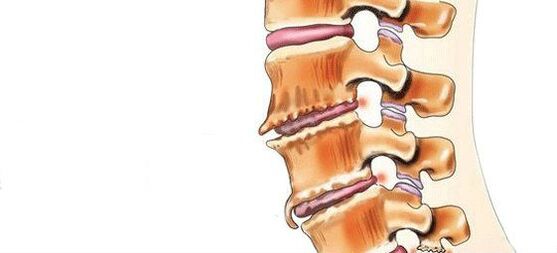
As the intervertebral disc shock absorption function is not performed, the vertebrae and small intervertebral joints begin to constantly injure.
Column instability is also the cause of cartilage damage from vertebrae bodies and joint processes.As a result, bone tissue grows, osteophytes appear(Greek: osteo - bone, phyto - plant)- Bone growth.The appearance of osteophytes is popularly called peak formation or salts.
- Osteophytes can constantly irritate the ligaments of the vertebral segment, which gradually leads to their ossification and limiting movements in the affected spine.
- Osteophytes can also impair nearby soft tissues, a result of which is the accumulation of dead cells in them, to which the body reacts with inflammation (edema).
- Osteophytes on vertebra surfaces facing intervertebral discs damage the fiber fibers, accelerating the formation of a hernia.The osteophyte, which grows toward the intervertebral canal, increases compression of the spinal cord, blood vessels, nerve roots.
- The growth of osteophytes can lead to the surroundings of neighboring vertebrae and the complete loss of mobility in the vertebral segment.
Symptoms and signs
Symptoms and signs of osteochondrosis - back pain!Initially, back pain may occur due to overload of rear muscles that try to centralize the excessively moving vertebrae (stage 3), so that the muscles protect the spinal cord located in the spine.The spinal cord is the central part of the nervous system;Therefore, the body tries to prevent its damage (squeeze, irritation).Subsequently, the cause of pain may already be the vertebrae of the vertebrae, hernral protrusion, even with a small size.At the time of the onset of a hernia, a person, as a rule, feels severe pain (this is called cervical or lumbar row).

Due to back pain, a person involuntarily seeks to assume a position in which the intensity of the pain decreases - the forced poses and so called.At the same time, the column is in a non -Vilent position that reduces disc depreciation skills.This increases the risk of your most damage.
As violations progress in joints, the development of ossification of vertebral bodies, joint surfaces and ligaments, the patient's spine begins to lose mobility.Partial restrictions and then complete to movements in the affected spine.
Column osteochondrosis complications
There are several stages of complication development of spine osteochondrosis.Its manifestations depend on the department in which the destructive process occurs.
- Discogenic Radiculite (Radiculopathy)where the hernal protrusion squeezes the nerve root (a lot of nerve fibers, extending from the spinal cord and later divided into nerves going into one or another area of the body).The pain is due to the mechanical effect of hernia on the spine and the addition of inflammation (edema).
- Vascular Brown Syndromewhere the vessels are squeezed that feed the roots of the spinal cord.It is manifested by hampered movements in the hands (with cervical osteochondrosis) or lower ends (with lumbosacra), as well as a loss of sensitivity.With this complication, the work of the internal organs may suffer, for which the affected nerves go (urination, sexual function, intestinal work, etc.) can develop, hypertension can develop and the deterioration of memory.Sometimes vascular violation occurs suddenly, with a clear movement in the affected area of the spine - more often in the lower back.There is acute pain and a sudden weakening of the muscles on the affected side - syndrome "Paralyzed Ishias".
- Violation of blood supply to the spinal cordcaused by the compression of vessels that feed the spinal cord.The extreme degree of complication is an ischemic stroke.The result of this complication is impaired movements in the limbs (paresis, paralysis), loss of sensitivity, deterioration in the work of internal organs to complete the refusal.In some cases, this may lead to the patient's death, for example, when renal function suffer seriously.
The symptoms of discogenic radiculitis depend on the spine:
| Location | Symptoms and signs |
|---|---|
| Cervical, cervical-root root | Depending on the level of damage, pain and impaired sensitivity in the neck, shoulder, forearm, the fingers occur.Muscle weakness in these departments can also be observed. Often, it joins the neuralgia of the occipital nerves, in which intense pain is observed in the back of the head.Arrhythmia may occur. |
| Lumbar cross size | It is manifested by pain in the lower back, which is usually combined with pain during the sciatic nerve - Ishias, ishiradiculitis.The weakness of the feet muscles also develops, there may be a violation of sensitivity in the thigh, legs and feet. |
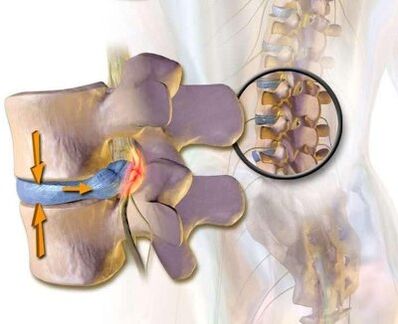
The displacement of vertebral bodies or intervertebral discs with subsequent tightening of blood vessels and nerve roots may require urgent surgical intervention.
The reasons for the development of spine osteochondrosis
Osteochondrosis is called multifactorial disease - that is, there may be many reasons for its occurrence.Here we will highlight two -chave factors that gradually lead to the defeat of intervertebral discs and subsequent changes in the spine:
- Deterioration under intervertebral disk power supply conditions, as well as cleaning their tissues.
- Excessive column in the spine, which leads to the accumulation of dead cells in the tissues of the vertebral segment.
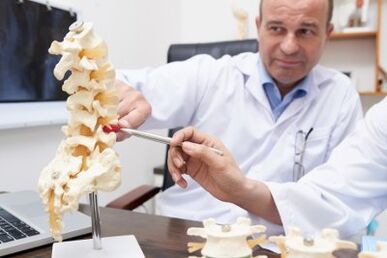
Updating intervertebral discs depends on blood flow sufficiency and lymphatic flow directly to intervertebral discs, neither blood vessels nor lymphony are suitable (which serve in the body to clean the tissues).Food and disc cleaning are performed indirectly, that is slowly.This is the reason why in this area not only occurs quicklyNutrient deficiency and oxygen hungerbut also quicklyDamaged and dead cells accumulateas well as elaborate substances.Tissue cleaning from “scorer” is necessary;Otherwise, there will be no place for new functional cells to occur, and then the fabric will gradually lose its function (for example, the disc core of the disc will cease to work out, depreciate and be slowly flat).
Updating intervertebral discs depends on blood flow sufficiency and lymphatic flow.The speed and strength of these processes are influenced by the created muscle microvibration (mainly) of the muscles of the back during physical stress.In this sense, one of the reasons for feeding and cleaning deficiency is hypodinamia when rear muscles are relaxed or in a static position.
As osteochondrosis develops, blood supply, lymph and venous output in the spine can deteriorate due tomuscular spasm.The body provides a sign to the muscles to keep the vertebrae in a certain position relative to each other in the affected area.For a long time, the Overstrown muscles squeeze the ships for a long time, which further exacerbates the situation.
It is obvious to most people that the spine may suffer in the event of an uncommon lifting of weights or when injuries, however, damage to the spine may be daily and not so tangible in case of violation of the neuromuscular depreciation system.Constant microtraums under poor lymphatic flow conditions lead to the accumulation of dead cells, prevents functional cell growth and leads to tissue ossification.
Violation of neuromuscular depreciation as one of the main causes of osteochondrosis
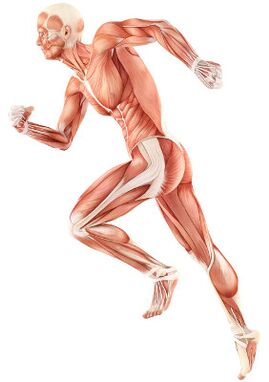
In violation of neuromuscular depreciation as one of the main causes of osteochondrosis in order to reduce the load in the spine when walking, lifting weights, etc.The body has a whole system of neuromuscular depreciation.It is guaranteed by the functioning of the nervous system of the body and skeletal muscles that interact according to to ensure soft movements and extinguish shock loads in bones, joints and, of course, the spine.Therefore, most shock loads should extinguish the foot.In addition, the leg and back muscles are involved in depreciation.If this does not happen (for example, high uncomfortable shoes do not allow the foot to work), intervertebral discs are subjected to shocks for which they are not intended.The factors that lead to discord in the neuromuscular depreciation system are listed below:
- Posture Violation- Various types of spine curvatures that prevent it from "arising", the use of non -physiological furniture when working in the office, etc.
- Marching, execution of techniques (correctly when working, transfer weight from the foot to heel);
- Wearing high or unsaped shoes, which negatively affects foot depreciation capabilities.
- Excessive loads(practicing sports, exhaustive physical work), traumatic joints and spine
- Obesity- Excess weight changes the center of gravity of the body, as well as adipose tissue complicates the blood supply to the muscles, the conduct of nerve impulses;
- Driving in transportation sitting without depreciation (in a standing position, you can jump with your feet);
- Nervous system function disorders, for example, due to frequent use of painkillers that negatively affect nerve conductivity.
- Kidney interruptionDue to excess formation in the body of decay products.This may be associated with insufficient physical activity - a prerequisite for the work of the lymphatic system, responsible for cleaning the tissues of metabolic products and dead cells as well asLiver diseases, chronic outbreaks of inflammationetc.
Hypodinamia
One of the reasons for widespread osteochondrosis in recent decades is an epidemic of a sedentary lifestyle.The muscles of the back and the press in ordinary life are not involved enough and quickly weaken, and the strong muscles are necessary for the health of the spine that is not overloaded with static tension but are busy with dynamic work.The muscles of the back are the fastest weakened with hypodynamia, which is full of the following consequences:
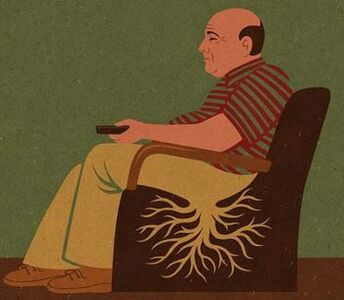
- Insufficient vertebral spine support in careless movements, which leads to overload of intervertebral discs, displacement of the vertebrae and the occurrence of intervertebral hernias.
- Deterioration of blood supply in the spine: The dynamic work of skeletal muscles is a prerequisite for blood flow to any organ, including the spine.As a result of the insufficient operation of the back muscles, destructive changes in intervertebral discs progress - cells die from a nutrient deficiency and oxygen.And dead cells accumulate, interfering with restoration.
- Lymphatic flow and venous output deterioration, which leads to the accumulation of dead cells in tissues.The work of skeletal muscles is especially important for the work of the lymphatic system, since most of its vessels (eg lymphocapillary) have no muscle walls, and "push" the lymph in blood vessels depends on the work of skeletal muscles.
4 Effective Treatment Principles
To not only remove symptoms, but also deal with the cause of the development of osteochondrosis, spondylosis, radiculitis and Ishias, the following tasks need to be resolved:
- Create opportunities for cleaning dead cells.This is a necessary condition for recovery in order to prevent the additional formation of osteophytes and release space for tissue regeneration.To do this, restore/strengthen lymphatic flow and venous output from affected segments;
- Improve blood supply for the affected area;
- Improve the tone of all muscles that support the spine.This will allow:
- Create conditions for stimulationto haveblood flow and lymphatic flow in the spine;
- Restore the operation of the neuromuscular depreciation system required for proper spine support to avoid further damage.
- Eliminate the pain, because this will give an opportunity:
- Remove muscle staples that block blood flow to the spine;
- Avoid forced poses.
Medicinal therapy (medicinal)
Today, in the treatment of osteochondrosis and its complications, medicines of the following groups are used:
- Necepoid Anti -Inflamation Drugs (NSAIDs)- In the form of drug tablets or injections.These funds have the ability to reduce pain, reduce inflammation activity.However, the effect of its use does not last long - from several hours to two to three days.Therefore, these funds should be received for a long time - weeks and sometimes months.At the same time, these medications negatively affect mucous gastrointestinal membranes.Its long -term reception is full of the development of gastritis, ulcerative lesions.In addition, they can negatively affect the work of kidneys, liver and contribute to the development of hypertension.And at the same time, these funds do not contribute to the cleaning of dead cell discs.Therefore, its use is only a way to relieve symptoms for a while, but not eliminate the main problem.
- CTEPOID (GOPMANAL).As a rule, they are used for serious and impenetrable pain that accompany hernia, radiculitis, ishias, etc.Gopmons have the ability to eliminate inflammation manifestations (due to the oppression of the immune system), alleviate pain.But they also negatively affect the mucous membranes of the stomach and intestine, promote bone calcium leaching, inhibit the production of their own gopmons.And do not contribute to cleaning the focus of dead cells.
- Pope- Drugs that affect the muscles or nerves that go to the muscles and cause relaxation of skeletal muscles.This means helping to relieve muscle staples for a while, reduce pain and improve blood flow.But at the same time, they do not help clean the tissue of the dead cells.Therefore, they do not contribute to cure osteochondrosis.
- Epiduvation blockade- The introduction of painkillers and single agents in the space between the solid brain shell and the periosteum that covers the vertebrae.It is used, as a rule, for intense pain - in the acute period of intervertebral hernia, with severe radiculitis, Ishias.Depending on the composition, this injection helps relieve pain for a period of several hours to several days.After the expiration date, the manifestations of the disease are returned, because the procedure does not help restore metabolic processes on discs.Also, when performed, there is a risk of injury to blood vessels and nerves.
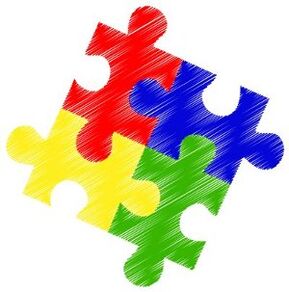
Such as osteochondrosis and the development of the progress of complicationsYou need to resort to medication more and more often, increase dosages.This leads to high financial costs as well as additional health deterioration due to the side effects of drugs.
Drug therapy, as a rule, is complemented by the immobilization of one or friend of the spine using orthopedic score of varying degrees of rigidity.
























